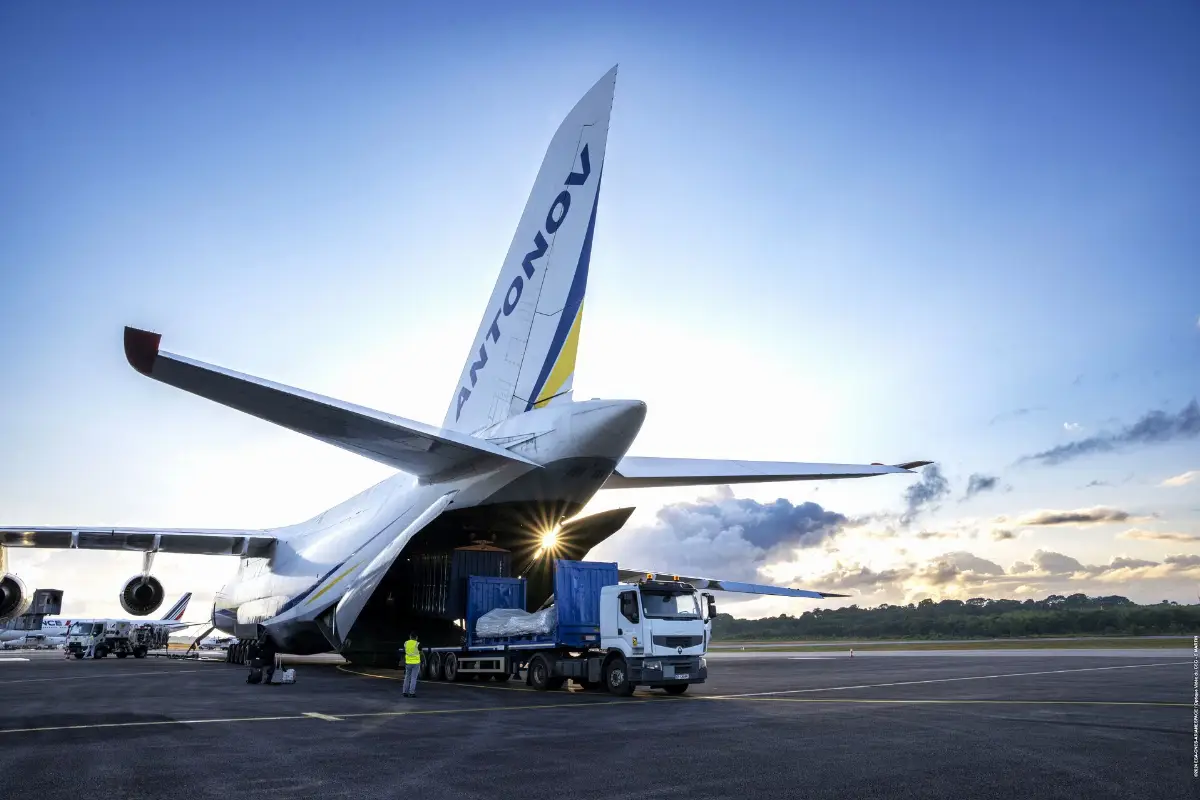
Sentinel-1C satellite arrives at Europe's spaceport in Kourou
The third of the Copernicus Sentinel-1 mission, will be launched on Vega-C at the end of 2024

After its journey from Cannes, France, via Turin, Italy, Sentinel-1C has landed safely in Kourou, French Guiana, after being transported on an Antonov aircraft. It will now undergo a series of activities to prepare for launch, ESA, the European Space Agency, reported today. A note that also reports the comment of Simonetta Cheli, Director of Earth Observation Programmes at ESA: "The Sentinel-1 mission highlights the strong partnership between ESA and the European Commission to deliver the vital radar data that Europe relies on".
The Copernicus Sentinel-1 mission provides all-weather radar imagery, day and night, for global monitoring of the Earth's land and oceans, supporting environmental management, disaster response and climate change research. Sentinel-1, the first of the Copernicus family, is based on a constellation of two identical satellites flying in the same orbit but 180° apart, to optimise global coverage and data delivery for Copernicus, the Earth observation component of the European Union space programme, managed by the European Commission.
Sentinel-1A was the first satellite in the series, launched in April 2014, followed by the launch of Sentinel-1B in 2016. The Sentinel-1B mission ended in August 2022 after experiencing a technical failure that left it unable to acquire data. The satellite was successfully deorbited and will re-enter Earth's atmosphere in 25 years. Sentinel-1C will soon take over Sentinel-1B's role in the mission.
Radar Vision for Copernicus
As an advanced radar mission, Copernicus Sentinel-1 can image Earth's surface through clouds and rain, regardless of whether it is day or night. The satellite carries a C-band Synthetic Aperture Radar (SAR) instrument, which enables it to capture high-resolution images of Earth's surface. This powerful radar system operates in different modes, including wide swath and high resolution, providing detailed data on land subsidence, ice movements and ocean conditions. It is particularly effective for disaster response, for example monitoring floods, landslides and oil spills, providing timely and accurate information to support humanitarian and environmental efforts.
The new Sentinel-1C satellite will also carry a new Automatic Identification System (AIS). Developed by the International Maritime Organization, it is designed to help ships avoid collisions, particularly when they are too far from ground-based radar systems. The technology assigns a unique ID to each vessel and tracks its position and movements in real time, creating a virtual map of ships at sea.
By combining radar images from satellites with AIS signals, data users can quickly detect and identify vessels across a large area of the ocean simultaneously and in real time. This is a unique tool not only for tracking the movement of each vessel, displaying its ID, direction and speed, but also for detecting piracy activities, which is vital for international organizations and companies that monitor global maritime traffic.
AVIONEWS - World Aeronautical Press Agency